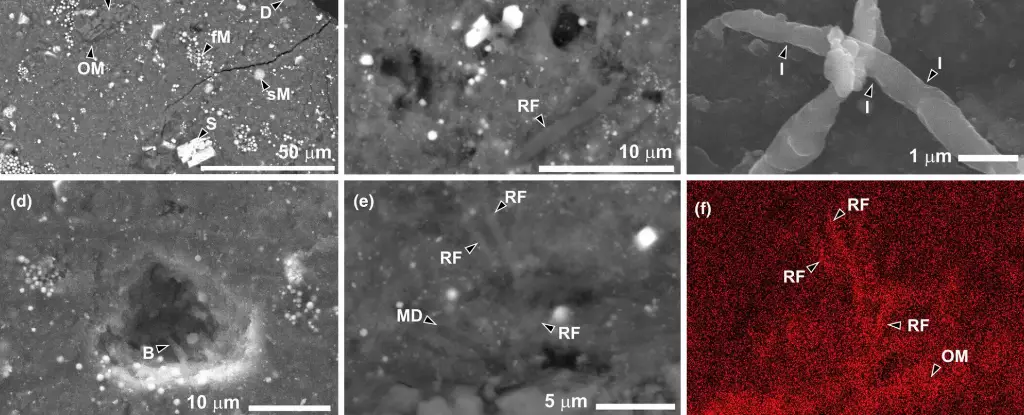The universe is a realm of endless wonders, particularly when it comes to the complex chemistry that unfolds in the vastness of space. For decades, scientists have unravelled the mysteries of organic molecules, discovering that they can be found in cold molecular clouds and even within asteroids. The presence of sugars and amino acids, often referred to as the essential ‘building blocks of life,’ has prompted discussions that span the realms of chemistry, astronomy, and biology. However, the implications of these findings stretch beyond mere chemical curiosity; they hint at the profound possibility that Earth may have been seeded not only with these fundamental components but potentially even with life itself.
The theory of panspermia—that life, or its precursors, originated from extraterrestrial sources—has captivated researchers and the public alike for centuries. Its roots can be traced back to the 1800s and early 1900s, coinciding with the astonishing realization that life on Earth emerged remarkably soon after the planet had formed. Considering the intricate structure of DNA and the complexity of living cells, the swift appearance of cellular life raises fundamental questions: How could life have evolved so rapidly? The panspermia hypothesis posits that living organisms may have undergone evolution in the cosmos or on distant celestial bodies and were later transported to Earth on asteroids or comets.
While we are aware that some life forms, such as extremophiles, are capable of enduring the harsh conditions of space, this theory leverages delicate assumptions about their resilience over astronomical timescales. A mature skepticism surrounds the transition from organic molecules to complex living systems. If life emerged on Earth within a geological instant, could this not reflect a hidden adaptability in organic chemistry itself? As we contemplate these questions, the veracity of panspermia remains tantalizing yet elusive.
Recent studies have thrust panspermia back into the limelight, particularly following the findings from the Hayabusa2 mission. Launched in 2014, Hayabusa2 successfully landed on an asteroid named Ryugu in 2018, returning pristine samples back to Earth in 2020. The meticulous precautions taken during the sample collection—hermetically sealing the material and ensuring it was kept sterile until its analysis—suggest that scientists were dedicated to unearthing extraterrestrial secrets while avoiding contamination from Earth’s biosphere.
Upon examination under an electron microscope, researchers discovered organic rods and filaments, initially interpreted as potential indicators of microbial life. For a fleeting moment, the scientific community buzzed with excitement, pondering the possibility that we had uncovered life from an asteroid. However, on further investigation and analysis, this conclusion seems premature.
Microbial life presents a formidable challenge for scientists. Even within sterile environments, microbes exhibit extraordinary resilience, proliferating in diverse and extreme conditions, from deep-sea thermal vents to power plant cores. Although the Hayabusa2 team undertook every effort to maintain sample integrity, evidence of contamination raised alarm bells. The observed size distribution of organic structures bore striking similarities to terrestrial microbial species—a compelling indication that these findings might not be as groundbreaking as initially thought.
Moreover, the growth patterns observed in the samples aligned closely with those of terrestrial microbes, suggesting that these microbes could not have diverged significantly over the extensive time frames implied by the panspermia hypothesis. Therefore, it appears that the findings do not provide supporting evidence for the theory. Instead, they highlight two critical implications for future exploration.
Firstly, the incident underscores the necessity for rigorous sterilization protocols in astrobiology missions. The potential for inadvertently transporting Earth life to extraterrestrial environments could have profound implications for both planetary protection and our understanding of life elsewhere. The notion that life—from Earth—may have inadvertently reached the Moon or Mars poses ethical and ecological considerations that scientists must address moving forward.
Secondly, the vital discovery that asteroids contain organic materials reinforcing the conditions necessary for life signifies promising avenues for humanity’s future beyond Earth. As we contemplate establishing colonies on other planets, the presence of organic matter within asteroids may play a crucial role in our quest to thrive beyond the confines of our home planet.
While the quest for understanding panspermia remains shrouded in uncertainty, the findings of the Hayabusa2 mission urge us to tread carefully. They remind us of the wonders of the cosmos and solidify the need for meticulous investigation as we reach for the stars. Nevertheless, whether life began in space or evolved on Earth, the implication that life could exist out there, waiting to be discovered, continues to inspire scientific inquiry, interstellar exploration, and humanity’s quest for connection beyond our blue planet.


Leave a Reply